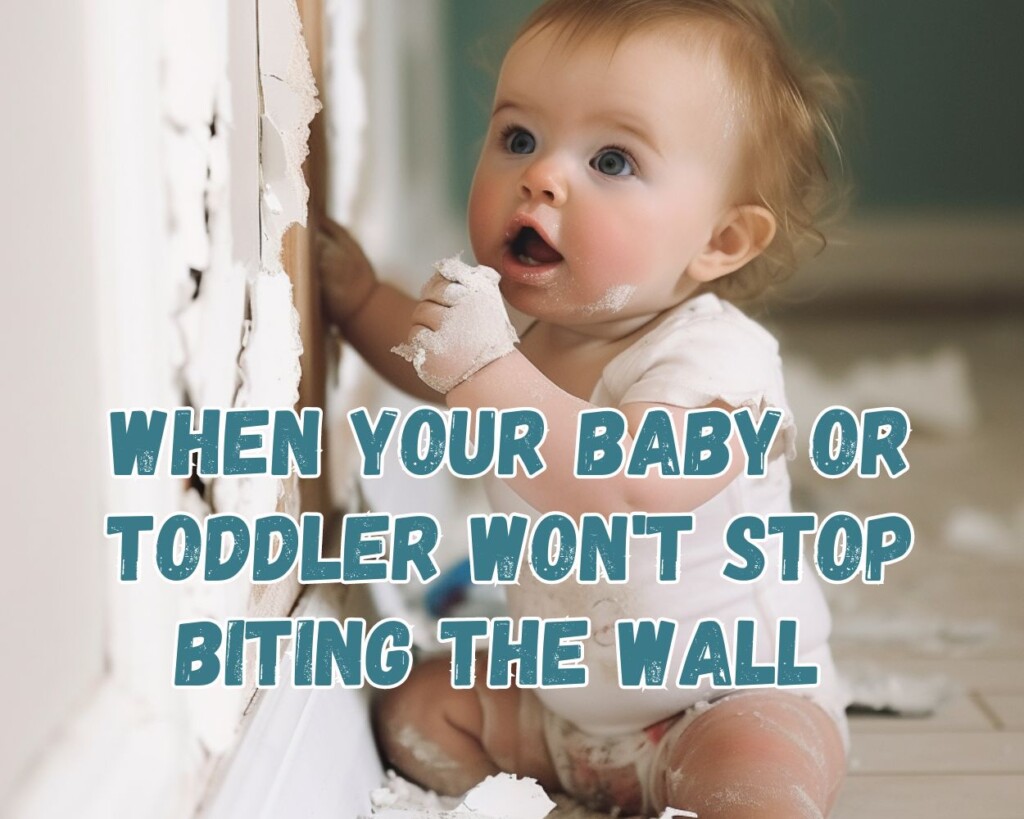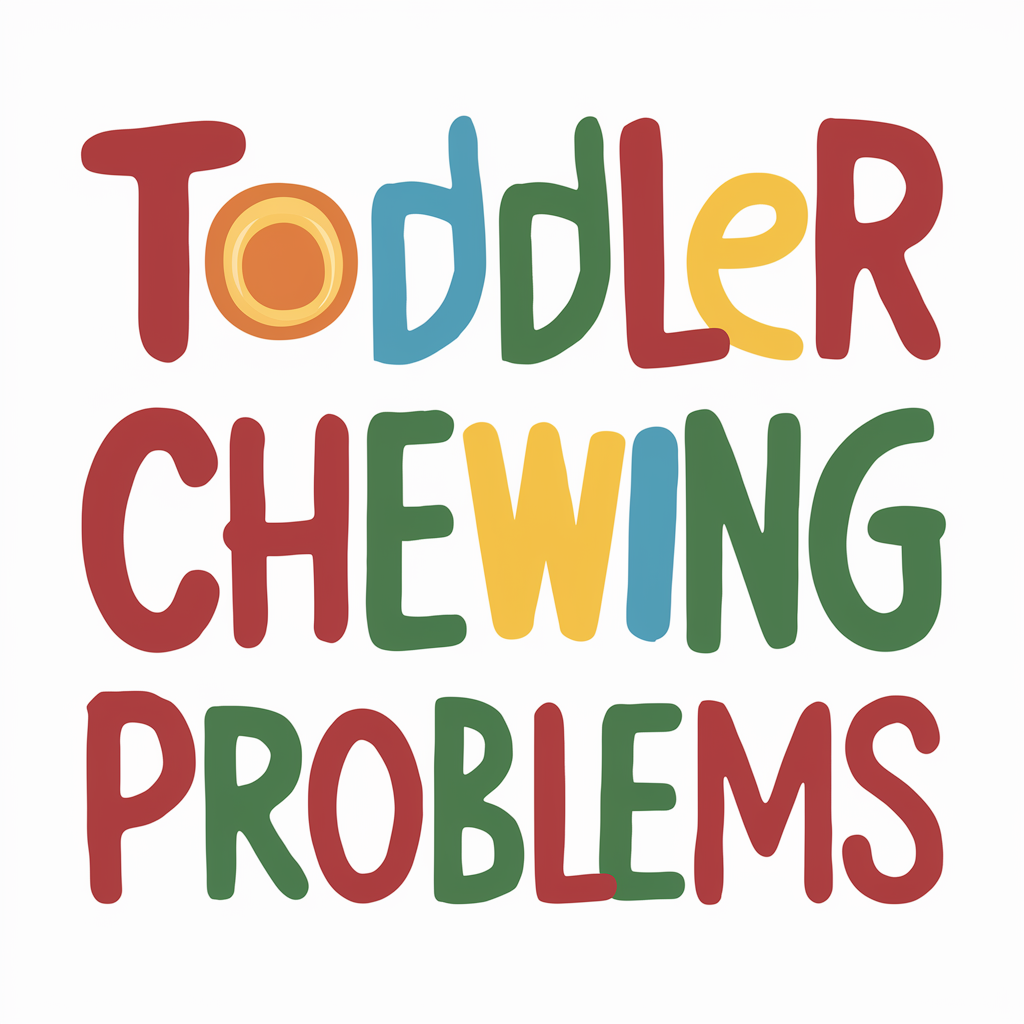The Biting Phase: More Than Just a Quirk
If you’ve noticed that your baby or toddler has developed a peculiar habit of trying to bite into walls, windowsills, or corners, you’re not alone. While it might seem strange or concerning, this behavior is not entirely uncommon. However, it’s essential to understand why it’s happening and how to address it.

Possible Reasons Behind the Behavior
Teething Troubles
One of the most common reasons for biting behavior in babies and toddlers is teething. The pressure from biting can relieve some of the discomfort they feel in their gums. There can be quite a few reasons why your toddler may have a chewing problem. See our toddler chewing problems article.
Sensory Exploration
Babies and toddlers learn about the world through their senses, including taste and touch. Biting into different surfaces can be a form of sensory exploration for them.
Attention-Seeking
Sometimes, children engage in unusual behaviors to get attention, especially if they notice that it elicits a strong reaction from adults.
Oral Fixation
Some children have a stronger need for oral stimulation and find comfort in activities that involve their mouths.
How to Address the Issue
Offer Teething Toys
If teething seems to be the culprit, provide your child with appropriate teething toys that can offer relief.
Create a Safe Environment
Child-proof the areas where your child tends to bite. Use corner protectors on windowsills and furniture, and consider applying a safe, bitter-tasting deterrent on surfaces to discourage biting.
Redirect the Behavior
When you notice your child attempting to bite a wall or other inappropriate surface, gently redirect them to a more suitable activity or object.
Consult a Pediatrician
If the behavior persists or if you’re concerned about why it’s happening, consult your pediatrician for a thorough evaluation. They can rule out any medical or developmental issues that might be at play.
Positive Reinforcement
Use positive reinforcement to encourage good behavior. Offer praise or small rewards when your child engages in appropriate activities instead of biting.
Be Proactive but Patient
It’s natural to be concerned when your child exhibits unusual behaviors like biting walls. However, with a proactive approach and a bit of patience, you can guide them toward more appropriate ways to explore and interact with their environment. Always consult with healthcare professionals for personalized advice tailored to your child’s needs.

Addressing Wall-Biting Behavior in Babies and Toddlers
Is Wall-Biting a Sign of Nutritional Deficiency?
While it’s less common, some children might engage in pica, a behavior where they eat non-food items, which could be a sign of a nutritional deficiency. However, wall-biting is generally not associated with nutritional issues. If you’re concerned, consult your pediatrician for a thorough evaluation.
Can Wall-Biting Be Dangerous?
Yes, biting into walls, windowsills, or furniture can be hazardous. There’s a risk of ingesting paint or other materials that could be toxic. Additionally, the child could damage their teeth or gums. It’s crucial to address the behavior promptly.
How Can I Use Positive Reinforcement Effectively?
Positive reinforcement involves rewarding the behavior you want to see more of. For example, if your child chooses to bite a teething toy instead of the wall, offer praise or a small reward like a sticker.
Should I Punish My Child for Biting the Wall?
Punishment is generally not recommended for this type of behavior, as it may not be effective and could create a negative association. Instead, focus on redirecting the behavior and using positive reinforcement.
How Long Does the Biting Phase Last?
The duration of the biting phase can vary from child to child. For some, it might be a short-lived phase during teething, while for others, it could last longer. If the behavior persists or worsens, consult your pediatrician.
Can Wall-Biting Be a Sign of a More Serious Issue?
In most cases, wall-biting is a phase or a response to teething discomfort. However, if the behavior continues or is accompanied by other concerning signs, it could indicate a more serious developmental or behavioral issue. Consult your pediatrician for an accurate diagnosis.

Knowledge Is the First Step to Resolution
Understanding why your baby or toddler is engaging in wall-biting is the first step in resolving the issue. Whether it’s a phase or a sign of something more serious, being proactive and consulting healthcare professionals can provide both peace of mind and practical solutions. Remember, each child is different, so what works for one may not work for another. Tailor your approach to fit your child’s unique needs.
As an Amazon Associate we earn from qualifying purchases through some links in our articles.



